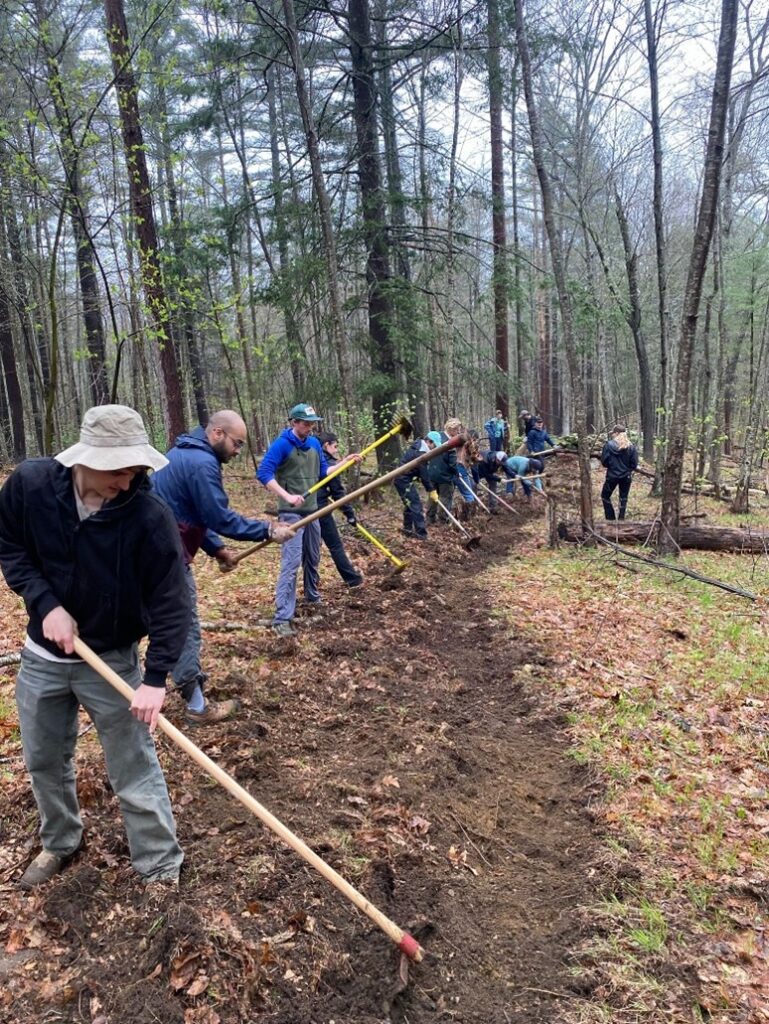On January 7th, I stepped out of a grocery store in Los Angeles and was hit by a smell I knew too well: burnt oak and sagebrush — the semi-sweet smoke of wildfire.
Looking up, I saw columns of smoke rising into a cloudless sky. I hadn’t realized a fire was burning when I went inside. This one looked serious. I drove to the Baldwin Hills overlook — where I used to take my family dog — and joined a growing crowd watching the Palisades neighborhood burn.
We stood there, dumbfounded.
“Wow,” we said.
“It’s ripping.”
“Are you okay? Do you have family over there?”

That week was surreal. My family evacuated to my parents’ house in Palms. Childhood friends lost childhood homes. People died. The droning sirens of emergency vehicles became like white noise in the background. My volunteer firefighter friends were called in to fight structure fires they hadn’t been trained for – and came back coughing up black particulates.
The Los Angeles Fire Department put out a call for anyone with wildland fire experience to volunteer – the hotline was jammed 24/7.
Amid the chaos, I felt something else, too: a desire to be better prepared. And a strange kind of gratitude that I had the opportunity to.
A month earlier, through the Fire Student Interest Group (SIG) at the Yale School of the Environment (YSE), I had signed up for Wildland Firefighter Type II training. Organized by my friends and classmates Josie Valette MEM’25 and Nate McMullen MF’25, the course was part of our shared commitment at the school to building not just intellectual capacity, but practical readiness – the kind that meets the moment.
At YSE, we’re lucky to learn from some of the world’s leading environmental thinkers – on policy, ecology, and forest dynamics. But I value the opportunities to get our hands dirty just as much. The firefighter training, which included S-130: Firefighter Training, S-190: Introduction to Wildland Fire Behavior, and L-180: Human Factors in the Wildland Fire Service, offered exactly that.
The course blended online components, using curriculum from Tall Timbers, with hands-on fieldwork led by our peers. I learned about the fire triangle of heat, fuel, and oxygen – and how to break one of its legs. How to light and manage a backburn with a drip torch. I learned how fire behaves across fuel types. How to stay alert, communicate clearly, and operate safely in chaotic, high-stakes environments.

I’m now beginning to understand what it means to work on a team in fire, and what will be expected of me on a prescribed burn crew or on a fire engine, and I have an even deeper respect for those in the fire service.
Growing up in the West, wildland fire isn’t new to me. I’ve been evacuated during Sierra fire seasons more than once. But fire has always been with us, and it doesn’t have to be a threat. It’s also a teacher.
It teaches humility.
It teaches adaptation.
And it reminds us that ecological stewardship isn’t about control – it’s about relationship.
The reality is that there are now – and will continue to be – fires that are beyond human control. Leaders in the fire service, like Matthew Carroll MF’10, who spoke at a Fire SIG event in the fall, talk of the future of wildland fire agencies being more than just an emergency response. Fire asks us to think deeply about ecological restoration, about fire-adapted land use patterns, and about how we show up for each other and the landscapes we call home.
Wherever I end up working in the West, fire will be a part of the ecological and social fabric of that place.
I’m deeply grateful to the Fire SIG, and Ucross, who made this training possible. I now know that preparing for future fires will mean forging lasting connections between people and place. It will also mean defensible spaces, thoughtful prescribed burns, and engines on standby.
And if the time comes when I need to grab a Pulaski and cut a fire line – I’ll be ready.

Steven Ring | Steven holds a Master of Environmental Management degree from the Yale School of the Environment, specialized in Ecosystem Management and Conservation, and People, Equity, and the Environment. He holds a B.A. in Anthropology from Kenyon College, where he graduated summa cum laude and Phi Beta Kappa. His professional experience spans roles with Trust for Public Land, Yosemite National Park, and TreePeople, emphasizing ecological stewardship, project management, and conservation. A published writer in The New York Times, Steven is also skilled in storytelling, research, and field leadership.
